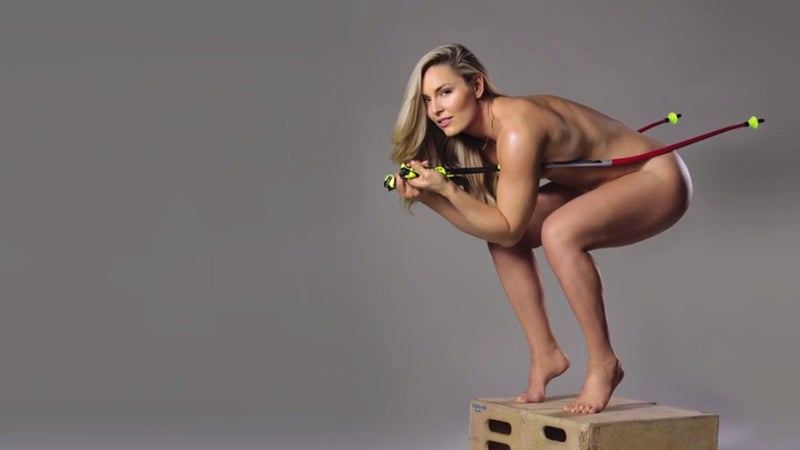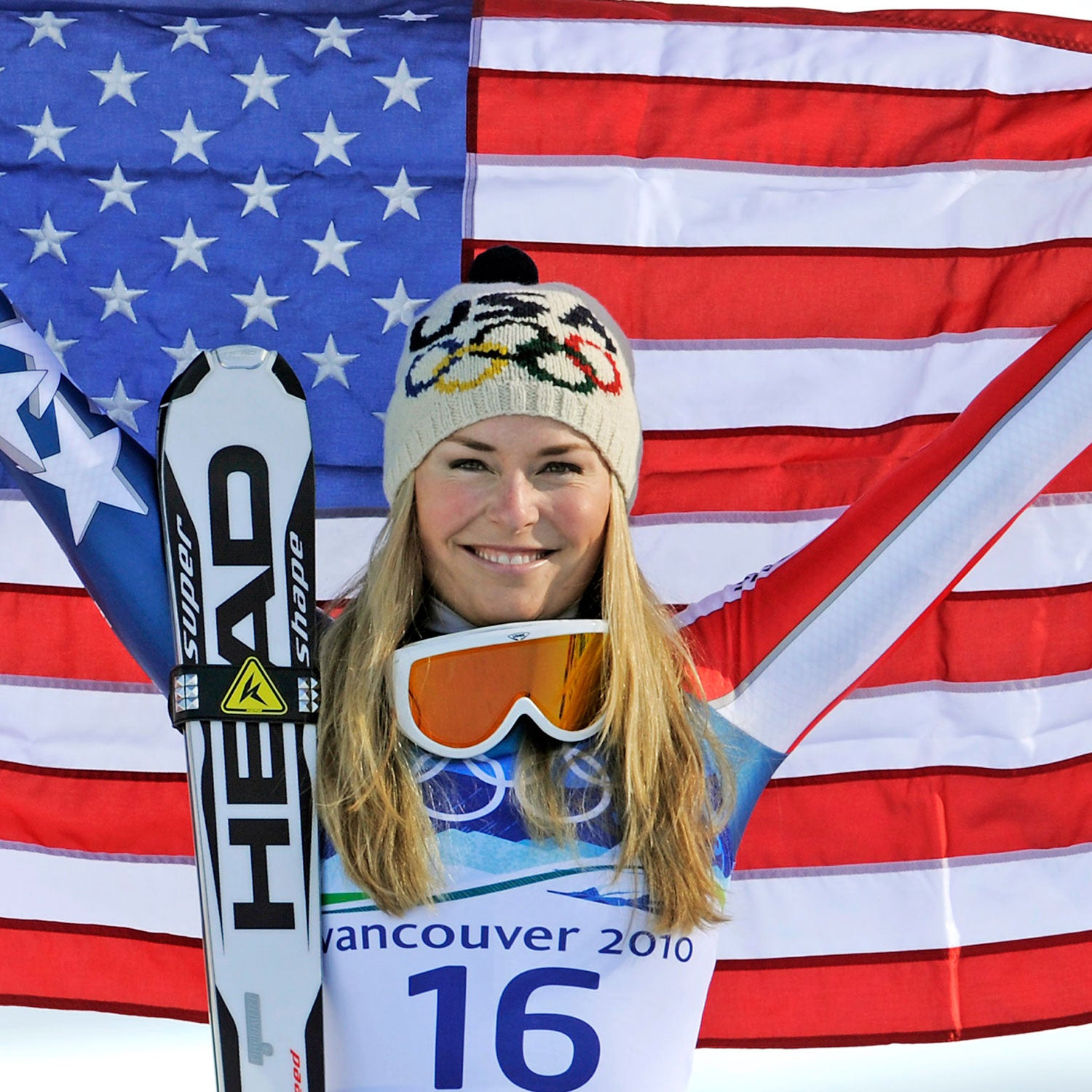Champion skier Lindsey Vonn’s new book, , is all about healthy body image, but you wouldn’t know it from the trailer, which features a mostly naked Lindsey wrapping herself in cloth, posing with ski poles, and smiling coyly in black heels under bright studio lights. It seems more like a behind-the-scenes promo for a magazine shoot than an ad for a book about nutrition and strength training. But in the age of the ESPN —an age where shiny, nude, athletic bodies have become nearly cliche and a sexy woman in a sports bra seems nearly chaste—the trailer straddles a fine line between pinup and power, one that warrants the headline “” while at the same time burnishing Vonn’s image as a female role model. This is “athlete nude,” and Vonn has executed it masterfully.
We’ve come a long way since 1999, when Brandi Chastain ripped off her soccer jersey after scoring the winning penalty in the Women’s World Cup. At the time, Chastain was criticized for distracting from the game itself: a woman’s body on display was, and is, a body open to critique, judged as much by aesthetics as athletic achievement. But years have passed, and Vonn is conventionally beautiful, and women’s skiing is relatively immune to the specter of queerness hovering over women’s team sports.

Vonn can put her strength on display without much backlash, in part, because she still fits into conventional beauty standards. As a blonde, pretty, able-bodied white woman, she challenges those standards in only one relatively minor way. And lest her athleticism prove distancing, her flirty gaze is reassuring: Vonn skis for herself, but she poses for us. In Strong Is the New Beautiful, Vonn’s definition of beauty rarely differentiates between internal rewards (“feel great”) and outside affirmation (“look better naked”). One gets the impression that she has not quite distinguished between the two, because for her they go hand in hand.
Vonn can put her strength on display without much backlash, in part, because as a blonde, pretty, able-bodied white woman, she challenges conventional beauty standards in only one relatively minor way.
If this book had been written by Serena Williams or hammer-throwing Olympian Amanda Bingson, it would have been marketed very differently, focused more on their incredible strength than on their striking, if less conventionally celebrated, beauty. As for Simone Biles, whose compact, muscular body radiates vigor and confidence, she would never have written this book at all. She doesn't need to: her every movement embodies its argument, proves it.
The most interesting part of Strong Is the New Beautiful comes in the autobiographical introduction, after Vonn recounts winning an Olympic gold medal. “Like other Olympic champions,” she writes, “I began to be invited to Hollywood events, movie premieres, and parties…I was taller than most of the women, and even many of the men, but I also felt bigger and much more muscular.” She found herself wondering, “Do I need to lose weight if I want to stay socially relevant as an athlete?” It’s a moment that feels both honest and disturbing: any woman in the public eye will be judged for her looks, with beauty as prime criteria for crossover success. It’s also a question that Vonn never fully answers, at least not in the text. Strong Is the New Beautiful refuses to celebrate weight loss for its own sake, but its very existence nods toward an uncomfortable truth. Six years after her last Olympics, Vonn’s naked body is a key part of her continued social relevance.
The ESPN Body Issue’s “athletic nude” imagery has become almost instantly recognizable as a symbol of empowerment: muscled bodies chiseled from stone, as perfect as classical Greek statues. It’s still radical for a magazine to photograph its male and female models in the same way, and a large part of the Body Issue’s significance is that it celebrates athletes of all genders and shapes, including paralympians. Still, any so-called empowerment is granted almost exclusively to female athletes; men, and especially male athletes, are assumed to have all the power they need.
In posing for athletic nudes, Vonn highlights a paradoxical trend, one that purports to challenge female objectification by adopting one of its principal features, nudity, to show the body as an active rather than passive object. Highlighting muscular female bodies is a subtle celebration of the blurring of gender roles, where physical strength is framed less as a masculine trait than as a fresh subcategory of attractive femininity. And celebrating the look of female power is an incremental step toward glorifying actual female power.
Ultimately, Strong Is the New Beautiful seems like the kind of book a supportive mom might buy for her teenage daughter. It’s also the kind of book that daughter might toss aside, finding its arguments and advice (seek out whole foods, sit less, walk your dog) familiar to the point of boredom. For today’s young women, there is nothing new about the idea that strength is beautiful. Vonn’s book is already obsolete. But that’s a good thing.


